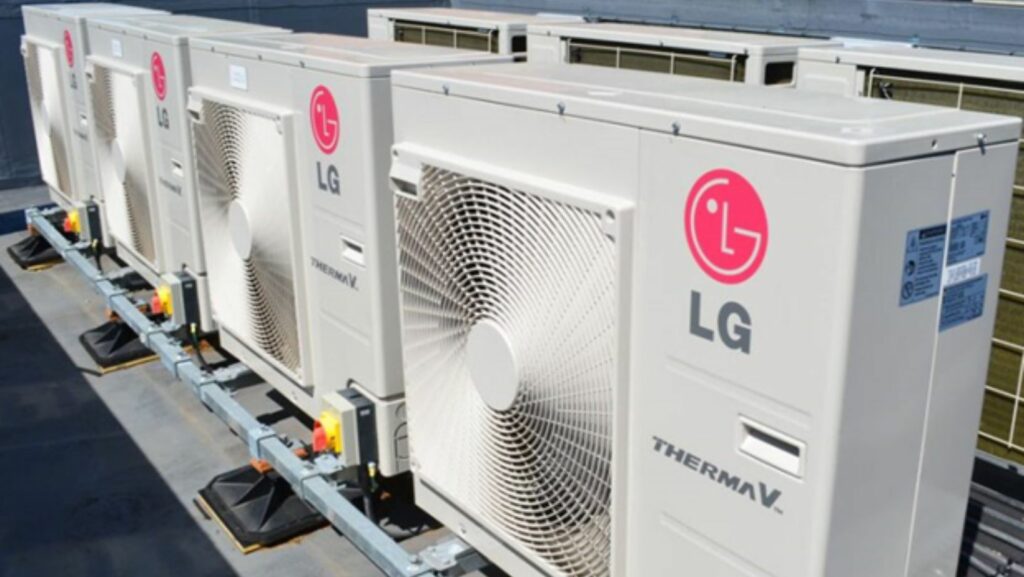HVAC products stand for Heating, Ventilation, and Air Conditioning systems—central to modern living, providing comfort and a controlled environment regardless of the external weather conditions. These systems are crucial in residential, commercial, and industrial settings, offering thermal comfort and acceptable indoor air quality. Designed to meet the diverse needs of different building designs and climates, HVAC systems come in varied forms and sizes.
Their importance cannot be overstated; HVAC systems directly impact people’s well-being by regulating the temperature, humidity, and air purity within living spaces. A well-designed and efficient system can ensure the health and comfort of inhabitants by filtering out pollutants, allergens, and controlling moisture levels, which can inhibit the growth of harmful mold and bacteria.
The necessity for efficient HVAC products has increased with the growing emphasis on energy conservation and sustainability. The systems are not only responsible for providing comfort but are also significant power consumers. Therefore, their efficiency matters greatly in the context of energy use and the associated environmental footprint.
A good understanding of HVAC products is crucial for homeowners, builders, facility managers, and anyone involved in property development or maintenance. Quality HVAC systems contribute to the structural integrity of buildings, save on energy costs, and enhance the quality of life for occupants. As technology advances, HVAC products continue to evolve with smarter, more energy-efficient solutions that respond to the changing needs of society.
Understanding the Different Types of HVAC Systems
HVAC, which stands for Heating, Ventilation, and Air Conditioning, encompasses an array of products designed to control the climate and improve air quality in both residential and commercial environments. Each type serves specific needs, and understanding the distinctions is essential for selecting the appropriate system for a given space.
Central HVAC systems are the most comprehensive solutions, providing heating, cooling, and ventilation to entire buildings through a network of ducts. They usually consist of a furnace, using electricity, gas, or oil to produce heat and an air conditioner to cool the air.
Ductless mini-split systems offer a versatile alternative, allowing for individual temperature control in different rooms or zones without the need for extensive ductwork. These are ideal for additions to homes, new constructions, or retrofit add-ons to houses with non-ducted heating systems.
Heat pumps are a unique kind of HVAC system that can provide both heating and cooling. They transfer heat from the outside air into the home during winter and reverse the process in the summer, which makes them highly energy efficient. There are two types of heat pumps: air-source and geothermal, each utilizing different methods to extract or dissipate heat.
Window units and portable air conditioners represent a category of smaller, localized solutions suitable for single-room applications. Despite the limitation in scope, they offer the convenience of easy installation and mobility.
Lastly, hybrid systems combine the efficiency of heat pumps with the power of traditional furnaces, automatically switching between the two energy sources depending on temperature demands and utility costs.

Understanding these different types of HVAC systems is fundamental in ensuring the best fit for one’s particular comfort needs and the architectural characteristics of their space.
The Role of HVAC in Energy Efficiency and Climate Control
HVAC systems are pivotal in achieving energy efficiency and maintaining climate control within residential, commercial, and industrial spaces. These systems must be expertly designed to balance the comfort of occupants with the need for energy conservation. One of the primary means through which HVAC systems contribute to energy efficiency is by using advanced technology such as programmable thermostats, which allow for precise control of temperature and humidity levels tailored to the daily patterns of the building’s usage.
Moreover, modern HVAC systems can integrate with building automation systems, optimizing performance by adjusting to changing conditions throughout the day. This includes reducing the cooling or heating loads during peak hours to alleviate the strain on the electricity grid and to lower energy costs significantly. Such dynamic regulation not only contributes to a smaller carbon footprint but also ensures a consistent indoor environment that adapts to the external climate and the specific needs of the occupants.
The ability of HVAC systems to filter and circulate clean air also plays a crucial role in the health and well-being of individuals by removing pollutants and maintaining adequate ventilation. This is particularly important in densely populated areas or environments with high levels of contaminants.
In essence, a well-functioning HVAC system is indispensable for maintaining a controlled, comfortable, and energy-efficient environment. It balances the imperative of conserving energy with the equally important need to provide a healthy and comfortable setting for inhabitants, contributing to the sustainability goals of modern society.
Innovative Features in Modern HVAC Technology
Modern HVAC technology has seen a wealth of innovation aimed at improving efficiency, comfort, and user control. These features not only enhance the user experience but also contribute significantly to the sustainability goals by reducing energy consumption.
One of the key innovative features in contemporary HVAC systems is smart thermostat integration. Smart thermostats allow users to control their heating and cooling remotely via their smartphones or other devices. They learn a user’s preferences over time and make automatic adjustments for optimal comfort and efficiency. Some models can even detect when occupants are away from the premises and adjust settings to save energy.
Variable speed technology is another advancement that has revolutionized HVAC systems. Unlike traditional systems that operate at full capacity all the time, variable speed units can scale their energy usage up or down, depending on the need. This leads to less energy wastage and can significantly lower utility bills.
Another feature is the incorporation of advanced filtration methods, such as HEPA filters and UV lights, which can improve indoor air quality. These filters capture a greater number of airborne particles and pollutants, while UV lights can neutralize viruses, bacteria, and mold that could be circulating through the vents.
Lastly, zoning systems are being integrated into HVAC systems to provide customized temperature control in different areas (zones) of a building. This not only ensures individual comfort but also reduces energy consumption by heating or cooling only the zones in use.
These innovations ensure that modern HVAC systems are smarter, more responsive, and more sustainable than ever before, aligning with the growing demands for energy efficiency and reduced carbon footprint.
Choosing the Right HVAC Product for Your Needs
Selecting the appropriate HVAC product for your home or business is crucial for achieving optimal comfort, energy efficiency, and cost-effectiveness. Start by considering the size and layout of the space, as an undersized system will be overworked, while an oversized one can lead to unnecessary energy consumption and uneven temperature control.
Consult with HVAC professionals who can perform a proper load calculation following the Manual J calculation procedure set by the Air Conditioning Contractors of America (ACCA). This will determine the right capacity for your system. Climate considerations should also influence your choice; if you live in a humid area, look for systems with humidity control. Conversely, in colder climates, high-efficiency furnaces and boilers can provide significant energy savings and comfort.

Additionally, the seasonal energy efficiency ratio (SEER) for cooling equipment and the annual fuel utilization efficiency (AFUE) for heating equipment should be considered. Higher ratings equate to greater energy efficiency. With the advancements in smart home technology, consider HVAC products compatible with programmable thermostats or those capable of integrating with home automation systems for enhanced convenience and further energy savings.
Ultimately, your budget will play a crucial role in your decision. However, investing in a higher-quality, energy-efficient system may yield long-term savings by reducing monthly utility bills and potential repair costs. The key is to balance your immediate financial capabilities with the potential long-term benefits of a quality HVAC system.
Maintenance and Upkeep: Ensuring Long-Term HVAC Performance
Regular maintenance and upkeep are imperative to prolong the lifespan and enhance the performance of HVAC products. An HVAC system is akin to a vehicle – it requires periodic check-ups to ensure it operates efficiently and to prevent unexpected breakdowns. Preventative maintenance can avert expensive repairs and maintain indoor air quality.
A comprehensive maintenance routine includes cleaning or replacing filters, inspecting ductwork for leaks or obstructions, checking refrigerant levels, and ensuring that all electrical components are functioning properly. Filters should be changed at a minimum every three months; however, in environments with high levels of dust or pet dander, more frequent changes may be necessary. Seasonal inspections are recommended, ideally before the onset of extreme weather conditions when the systems will be in high demand.
Professional technicians can perform more detailed assessments and services such as calibrating thermostats, lubricating moving parts, and checking the system’s controls. Scheduling regular professional tune-ups is a wise investment not only in the longevity of the system but also in energy efficiency, leading to lower utility bills.
Home and business owners must also be vigilant and attentive to their HVAC systems. Early detection of unusual noises, functionality issues, or a noticeable increase in energy consumption can be indicative of a problem that requires immediate attention. By recognizing the critical role of maintenance and being proactive with HVAC care, one can ensure consistent comfort, optimize system performance, and save money over the life of the HVAC product.

